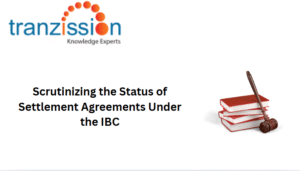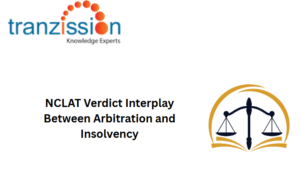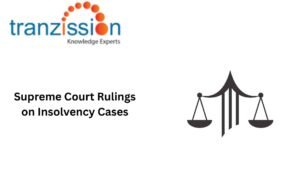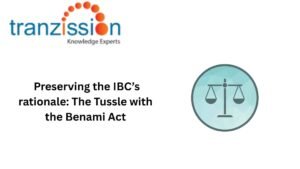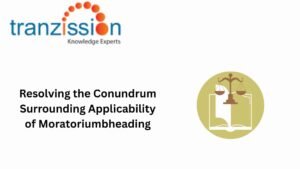
Recovery of Debts and Bankruptcy Act, 1993 – Bare Act

Table of Contents
Banks and financial institutions also need a mechanism to recover debts efficiently, which the Recovery of Debts and Bankruptcy Act, 1993 (“the RDBA”) provides. It also offers borrowers a framework for resolving debt issues, although ti can also lead to stricter enforcement of debt obligations. Therefore, the RDBA is crucial for the stability of the financial system, which is given in more detail in this article.
Understanding the Recovery of Debts and Bankruptcy Act, 1993
Objectives of RDBA:
The RDBA provides an efficient legal framework for banks and financial institutions to recover outstanding debts from defaulting borrowers. It aims to address the issues of non-performing assets (NPAs) by providing a specialised system for resolving disputes related to debt recovery. It establishes the Debt Recovery Tribunals (DRTs) and Debt Recovery Appellate Tribunals (DRATs) for faster adjudication of debt recovery cases and reduces the backlog of cases in civil courts related to debt recovery.
Scope of Application:
The RDBA was amended by the Finance Act, 2017, and included changes related to default limits, making it applicable to debts exceeding ₹20 lakhs, which was previously ₹10 lakhs. This amendment allows banks, financial institutions, and secured creditors to initiate proceedings under the Insolvency and Bankruptcy Code, 2016 (“the IBC”), but does not cover individual debtors outside the purview of banking and financial institutions.
Debt Recovery Tribunals – The Backbone of RDBA
What is a Debt Recovery Tribunal (DRT)?
The DRT is a specialized quasi-judicial body established under Recovery of Debts and Bankruptcy Act to handle cases related to debt recovery. Section 3 of the RDBA states that DRTs have the power to adjudicate and enforce recovery orders against borrowers. DRTs have the authority to entertain applications from banks and financial institutions for the recovery of debts due to them, and aim to provide a faster and more streamlined system for recovering debts, reducing delays and compared to traditional court processes.
What is the Debt Recovery Appellate Tribunal (DRAT)?
The DRAT is the appellate body to hear appeals against DRT orders, and to file an appeal, the borrower must deposit at least 50% of the debt amount awarded by the DRT, as under section 8 of the RDBA.
Check this out : Limited Insolvency Practice Exam
Key Provisions of the Recovery of Debts and Bankruptcy Act, 1993
The DRT and the DRAT are established under sections 3 and 8, respectively, while section 9 outlines the composition of DRATs. The jurisdiction and powers of the DRT and the DRAT are summarised under sections 19 and 22, which specify the jurisdiction of the DRT for entertaining applications for recovery of debts and the powers of the DRT and DRAT. Section 20 provides for appeals to the DRAT and section 21 requires the deposit of the amount of debt due on filing an appeal. The recovery of debt is outlined under sections 25 and 26, and deals with the validity of recovery certificates and their amendment. The RDBA also has an overriding effect over inconsistent provisions of other laws, according to section 34.
RDBA vs. Insolvency & Bankruptcy Code– Understanding the Difference
Coexistence of Recovery of Debts and Bankruptcy Act and IBC:
The IBC focuses on resolution and revival of distressed companies, while the Recovery of Debts and Bankruptcy Act is primarily for debt recovery. Therefore, financial institutions can opt for either route depending on the nature of the default and available assets.
Differences Between Recovery of Debts and Bankruptcy Act and IBC
| RDBA | IBC | |
| Scope and Purpose | Deals with the recovery of debts due to banks and financial institutions by establishing the DRT and the DRAT. | Aims to consolidate and amend laws relating to the reorganisation and insolvency resolution of corporate persons, partnership firms, and individuals, resolving financial issues in a time-bound manner, maximizing asset value, and balancing the interests of all stakeholders. |
| Applicability | Primarily applicable to debts owed to banks and financial institutions. | Applies to all entities and includes both secured and unsecured creditors. |
| Key features | Establishes a special system for debt recovery through the DRTs. | Introduces the concept of the Committee of Creditors (CoC), insolvency professionals to manage the insolvency process, provides a time-bound resolution process, and classifies creditors during the process. |
| Objectives | To facilitate the efficient recovery of debts owed to banks and financial institutions | To promote entrepreneurship, balance the interests of all stakeholders in the insolvency process, and to maximise the value of the assets of the distressed company. |
| Relationship with other laws | The RDBA, SARFAESI, and the IBC do not prevail over the Prevention of Money Laundering Act (The Deputy Director Directorate of Enforcement Delhi v. Axis Banks & Ors. CRL. A. 143/2018 | The IBC supersedes or incorporates provisions from other insolvency-related laws, such as the Companies Act, 2013, and the RDBA. |
Judicial View on RDBA vs. IBC:
In the landmark case of Innoventive Industries Ltd. v. ICICI Bank, the Supreme Court emphasised that the IBC prevails over state laws and that the corporate debtor’s obligations to repay are unconditional, even if funds are not released by creditors. Therefore, in cases of conflicts, if a company is undergoing insolvency proceedings under the IBC, financial creditors cannot proceed simultaneously under the RDBA.
Challenges in Debt Recovery Under RDBA
Delays in Proceedings:
DRTs were created to speed up cases, but they still suffer from delays due to case backlogs. The recovery mechanisms available to DRTs, such as asset attachment and garnishment of wages, can be inefficient and time-consuming, further contributing to delays. Further, the limited number of DRTs across the country also causes congestion.
Asset Identification & Recovery Issues:
Borrowers often transfer assets or create legal hurdles to prevent attachment. Further, recovery officers face challenges in executing orders due to a lack of cooperation from local authorities.
Lack of Awareness Among Financial Creditors:
Many financial institutions are unaware of the optimal use of DRT proceedings and often resort to traditional civil litigation. Hence, the Insolvency and Bankruptcy Board of India (IBBI) needs to establish better training and legal awareness for banking professionals.
Best Practices for Efficient Debt Recovery Under RDBA
To address the legal hindrances of the RDBA, it is crucial:
- To ensure that applicants to file well-documented claims with all necessary financial statements and records, and that insolvency professionals can assist in preparing legally sound applications.
- For banks to opt for negotiated settlements through DRT, instead of prolonged litigation. Further, mediation and compromise mechanisms should be encouraged.
- To enhance the coordination between DRTs, local authorities, and enforcement agencies.
- To adopt digitization methods in debt recovery processes for transparency and efficiency.
The Future of RDBA – Possible Reforms & Amendments
The future of the RDBA involves ongoing efforts to streamline debt recovery processes and enhance the efficiency of DRTs and DRATs, with initiatives like online resolution. There needs to be more establishment of DRTs across regions to manage increasing case loads and increase the number of presiding officers to speed up proceedings. The Insolvency and Bankruptcy Board of India (IBBI) needs to create a seamless mechanism where cases under RDBA and IBC are aligned for better resolution and empower insolvency professionals to handle RDBA cases as part of the financial resolution process.
Conclusion
The RDBA is crucial to India’s debt recovery insolvency framework as it established the DRT and the DRAT, providing a specialised and expedited mechanism for resolving debt disputes between banks and financial institutions and their defaulting borrowers. The IBC is a piece of legislation related to insolvency and liquidation proceedings, which, along with the RDBA, are a subject of legal interpretation in specific cases. Despite the introduction of the IBC in 2016, the RDBA is relevant for understanding the legal framework for debt recovery and bankruptcy in India as it applies to NPAs, which the IBC does cover.

